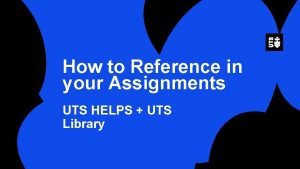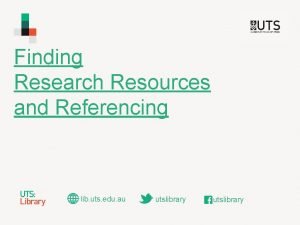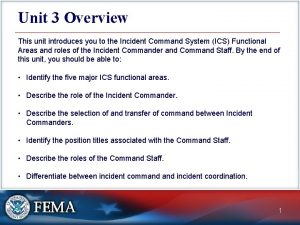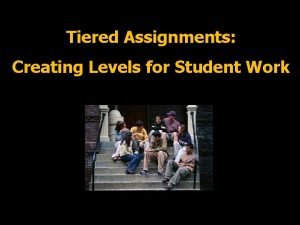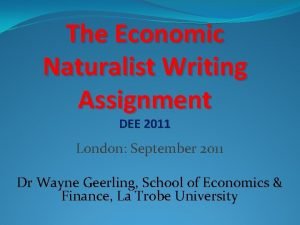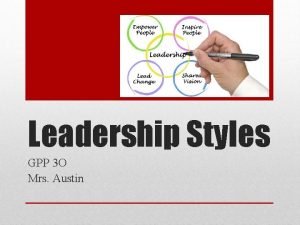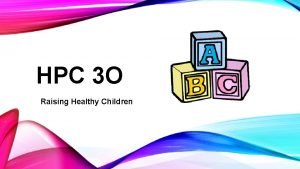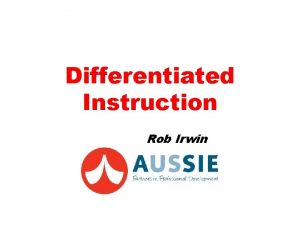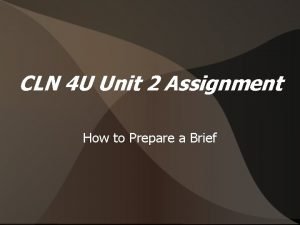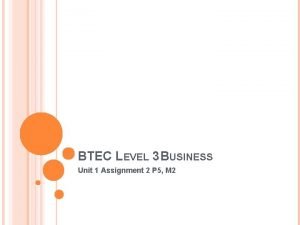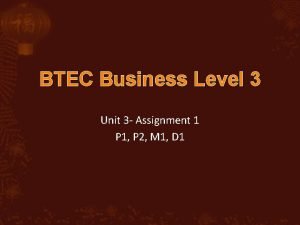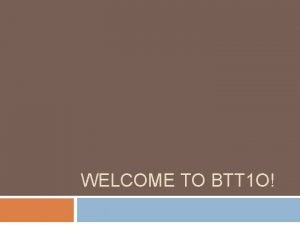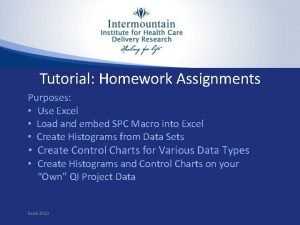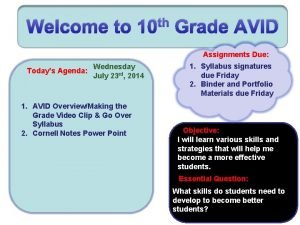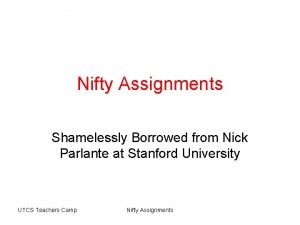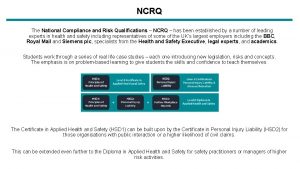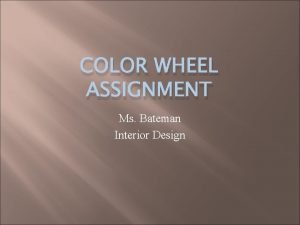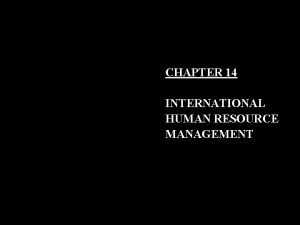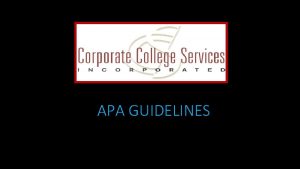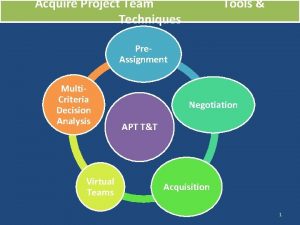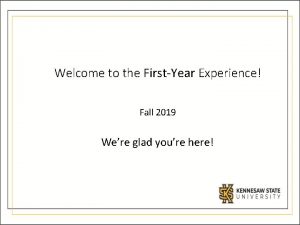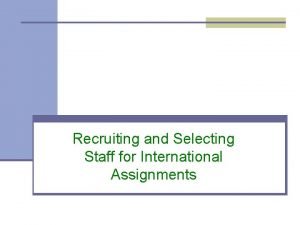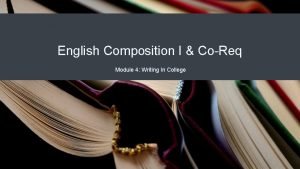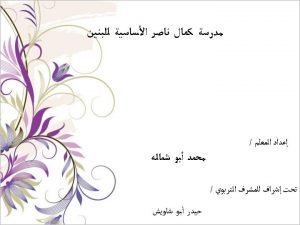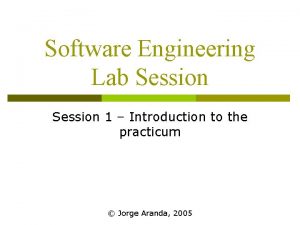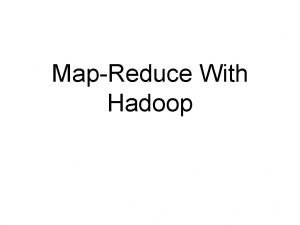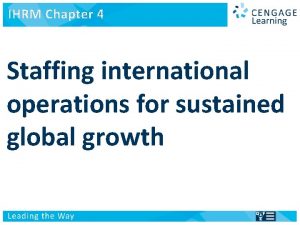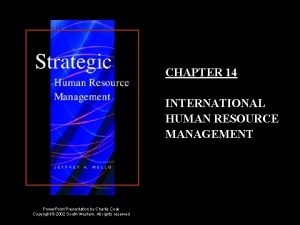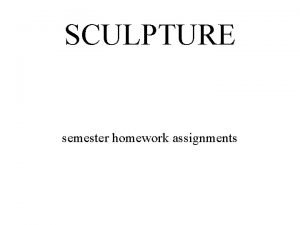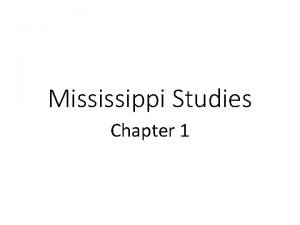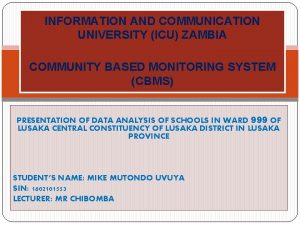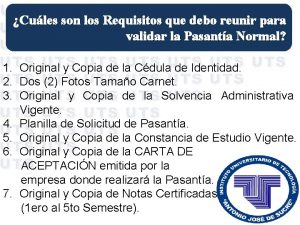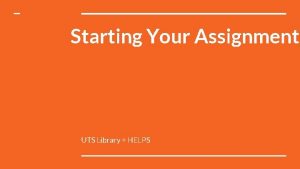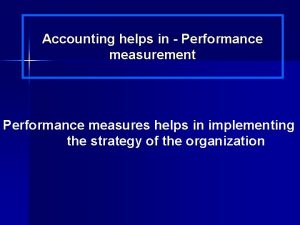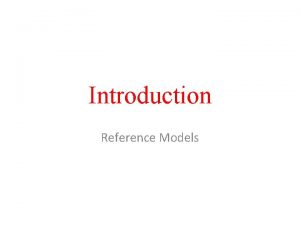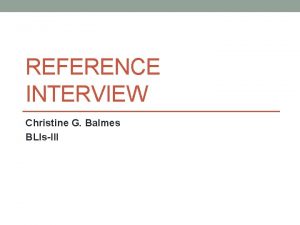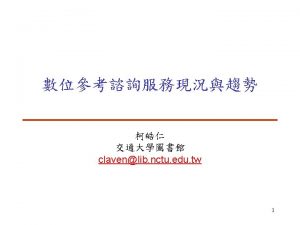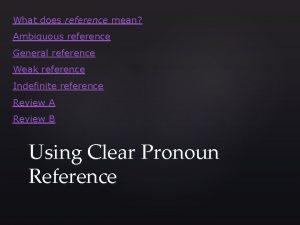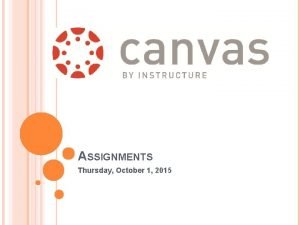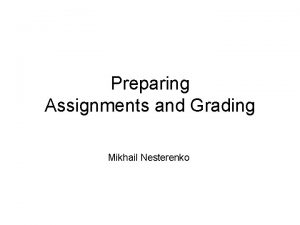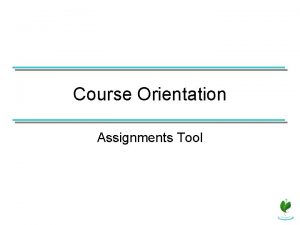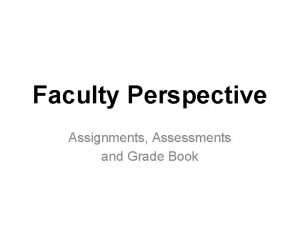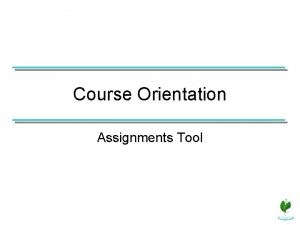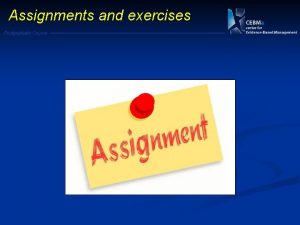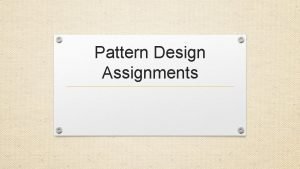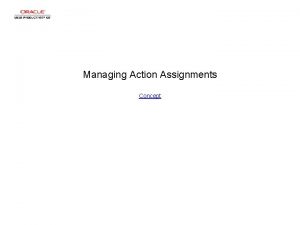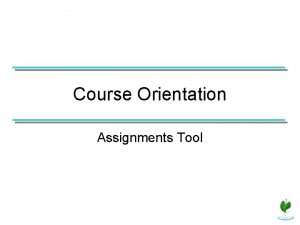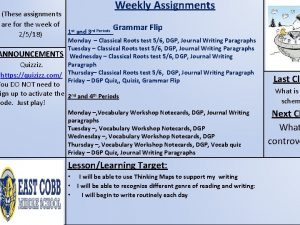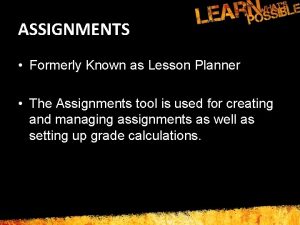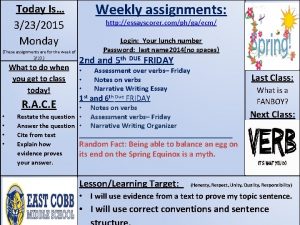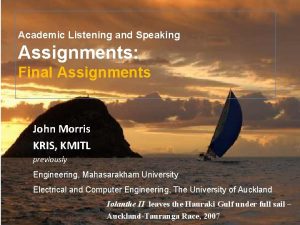How to Reference in your Assignments UTS HELPS






































- Slides: 38

How to Reference in your Assignments UTS HELPS + UTS Library

Presenters XXXXX UTS HELPS XXXXX UTSLibrary

Zoom Etiquette Make sure that your camera is OFF - too many cameras at once slows down the feed. There is a video icon on the bottom left of your screen where you can control this. Unless you want to ask a question, MUTE your headphones – too much feedback means that you won’t be able to hear us. There is a microphone icon at the bottom left of your screen where you can control this.


You can find a copy of these slides on the UTS HELPS website Click – Daily Workshops Click – Improve your Writing Scroll down to the Referencing workshop



Workshop Objectives Ø To understand plagiarism and the importance of its Avoidance Ø To become familiar with the APA 7 th referencing system and Convention Ø To learn how to provide in-text citations and compile reference lists

You will need paper and a pen if you would like to participate in this workshop

What is plagiarism? Ø No acknowledgement of the author or its source Ø Deliberate cheating or copying and pasting Ø A type of student misconduct Ø Results in serious consequences

Examples of plagiarism/cheating (this is not an exhaustive list!) Ø copying out part(s) of any document without acknowledging the source. Ø using another person's concepts, results, processes or conclusions, and presenting them as your own. Ø paraphrasing and/or summarising another's work without acknowledging the source. Ø buying or acquiring an assignment written by someone else on your behalf.

Academic integrity q Trust q Reputation q Respect q Accurate

Using sources in assignment Writing assignments involves bringing together two sources of ideas: ➔ ➔ The ideas of others - discovered in their research process and readings Your own ideas - formed through critical thinking in the research and reading processes; also, influenced by what you have read/seen/watched …

Using others’ ideas When you use others’ ideas, you can: ➔ Quote use the writer’s actual words, which requires the least input from you ➔ Paraphrase rewrite the writer’s ideas in your own words, which requires more thinking on your part ➔ Summarise rewrite the writer’s ideas in your own words in a shorter form, which achieves the best balance of your thinking and others’ ideas.

Quotes vs Paraphrase vs Summarise You should summarise much more than you paraphrase or quote because when you summarise, you show that you can: ➔ Understand others’ ideas ➔ Synthesise and connect those ideas in order to support your argument

Quoting To quote correctly: ➔ Use quotation marks ➔ Copy the exact words ➔ Give reference details, including the page/paragraph number

Paraphrasing To paraphrase correctly: ➔ Keep the meaning of the original text ➔ Keep the key words ➔ Change most of the words ➔ Change the word order/order of information ➔ Give reference details

Summarising To summarise correctly: ➔ Keep the authors’ main ideas ➔ Avoid quoting the authors’ words ➔ Make it clear which ideas are yours, and which are the authors’ ➔ Give reference details

Avoiding Plagiarism Quiz

Referencing Styles & Systems at UTS Ø APA 7 th Referencing Most faculties at UTS Ø Harvard UTS Referencing Will stop being used at the end of 2020 Ø AGLC Referencing Faculty of Law

Components of Referencing ØIn-text referencing When you use others’ ideas in your writing: quotes or paraphrasing or summarizing, acknowledge the work or ideas of others! Butler et al. (1997) noted that the English language diaspora has significantly enriched the language. ØReference list Full details of sources you have used for your writing Butler, J. E. , Severino, C. , Guetta, D. , & Guerra, J. C. (1997). Writing in multicultural settings (4 th ed. ). Modern Language Association of America.

In-text referencing essentials The way your in-text citations look depends on how many authors there are: Narrative citations: Author(s) (Date) Smith (2017) stated that the children “found play stimulating” (p. 98) Parenthetical citations: (Author(s), Date) The children “found play stimulating” (Smith, 2017, p. 98) One author: (Smith, 2019) Smith (2019) Two authors: (Jensen & Harris, 2019) Jensen and Harris (2019) * Note the “&” changes to “and” in a narrative citation Three or more authors: (Proepper et al. , 2016) Proepper et al. (2016)

APA Referencing Guide

Exercise: Book Author. (Year). Title (Edition). Publisher.

Exercise: Book - Answer Kesselman-Turkel, J. , & Peterson, F. (1981). Study smarts: How to learn more in less time. University of Wisconsin Press. Narrative Citation: Kesselman-Turkel and Peterson (1981) Parenthetical Citation: (Kesselman-Turkel & Peterson, 1981)

Exercise: A book chapter Author. (Year). Chapter title. In Editor (ed. ), Book title (Edition, Page range). Publisher.

Exercise: A book chapter - Answer Taylor, M. (2010). Public relations in the enactment of civil society. In R. L. Heath (ed. ). The SAGE handbook of public relations (2 nd edn, pp. 5 -16). SAGE Publications. Narrative Citation: Taylor (2010) Parenthetical Citation: (Taylor, 2010)

Exercise: Journal article Author. (Year). Title of journal article. Journal title, Volume number(Issue number), Page range. DOI

Exercise: Journal article - Answer Freberg, K. , Remund, D. , & Keltner-Previs, K. (2013). Integrating evidence based practices into public relations education. Public Relations Review, 39(3), 235 -237. Narrative Citation: Freberg et al. (2013) Parenthetical Citation: (Freberg et al. , 2013)

Exercise: Website Author. (Year, Month Day). Title of webpage. Title of Website. URL

Exercise: Website - Answer Australian Institute of Health and Welfare. (2017, August 7). Risk factors to health. https: //www. aihw. gov. au/reports/biomedical-riskfactors/risk-factors-tohealth/contents/tobaccosmoking Narrative Citation: Australian Institute of Health and Welfare (2017) Parenthetical Citation: (Australian Institute of Health and Welfare, 2017)

In text citations Format for a Reference List

Get Help!

APA 7 th Referencing Guide

Use Ref. Works to help with referencing

Have a look at the Reference Lists in the sample written assignments on our HELPS website.


CB 01. 05. 25 9514 9733 helps@uts. edu. au www. helps. uts. edu. au
 Uts library apa referencing
Uts library apa referencing Uts harvard reference
Uts harvard reference Reference node and non reference node
Reference node and non reference node Reference node and non reference node
Reference node and non reference node Which ics functional area sets the incident objectives
Which ics functional area sets the incident objectives Tiered assignments
Tiered assignments Economic naturalist writing assignment
Economic naturalist writing assignment Gpp3o
Gpp3o Hpc3o
Hpc3o Tiered assignments examples
Tiered assignments examples User rights assignments
User rights assignments Cln4u assignments
Cln4u assignments Btec business unit 4 assignment 2
Btec business unit 4 assignment 2 Btec sport unit 3 assignment 1
Btec sport unit 3 assignment 1 Hsb4u assignments
Hsb4u assignments Btt word processing
Btt word processing Excel homework assignments
Excel homework assignments Avid binder checklist
Avid binder checklist Bongo video assignments
Bongo video assignments Nifty assignments
Nifty assignments Myncrq
Myncrq Color wheel assignment
Color wheel assignment Strategic hr issues in international assignments
Strategic hr issues in international assignments Apa homework format
Apa homework format Acquire project team
Acquire project team Ksu fye resources
Ksu fye resources Indirect cost of expatriate failure
Indirect cost of expatriate failure Undefined-topic assignments
Undefined-topic assignments They haven't finished their homework yet
They haven't finished their homework yet Software engineering lab assignments
Software engineering lab assignments Hadoop assignment help
Hadoop assignment help Types of international assignment in ihrm
Types of international assignment in ihrm Ihrm ppt
Ihrm ppt Business plan grade 9 ems
Business plan grade 9 ems Cgc1p assignments
Cgc1p assignments Sculpture assignments
Sculpture assignments Ms studies chapter 1
Ms studies chapter 1 Emphancy
Emphancy Unit 2 technology systems exam
Unit 2 technology systems exam
